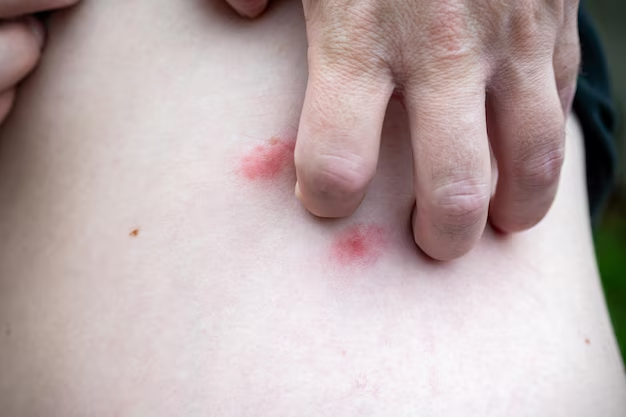Understanding When Shingles Can Be Contagious
Shingles, a reactivation of the varicella-zoster virus, is a condition that often puzzles many when it comes to its contagious nature. Known for its painful rash and sometimes debilitating symptoms, understanding how and when shingles can be spread is essential, particularly for vulnerable populations. Let’s delve into the nuances of shingles, when it can be contagious, and how to protect yourself and others.
The Basics of Shingles
Shingles, scientifically named Herpes Zoster, occurs when the dormant varicella-zoster virus reawakens in the body. This virus is the same one that causes chickenpox, commonly experienced during childhood. Once chickenpox has resolved, the virus doesn’t leave your body. Instead, it lies inactive in the nervous system, waiting for an opportunity to resurface, often during times of weakened immunity or stress.
Symptoms and Development
The symptoms of shingles typically begin with a tingling or burning sensation on the skin, accompanied by pain. As the condition progresses, a rash develops, usually forming a stripe or patch on one side of the body. Within a few days, the rash evolves into fluid-filled blisters that eventually crust over and heal within two to four weeks.
Key Symptoms Include:
- Pain, burning, numbness, or tingling
- Sensitivity to touch
- A red rash that appears after the pain
- Fluid-filled blisters
- Itching
When Is Shingles Contagious?
The contagious nature of shingles is not straightforward; it does not spread from person to person as shingles itself. Instead, a person with shingles can potentially cause another person to develop chickenpox, not another case of shingles. This transmission occurs through direct contact with the open sores of the shingles rash.
Contagion Period
Shingles is contagious as long as there are open blisters. Once the blisters have crusted over, the virus can no longer be spread to others. This stage can range from a few days to weeks depending on the individual's immune response and healing process.
Who Is at Risk?
Those who have never had chickenpox or the varicella vaccine are at higher risk of contracting the virus through contact with an infected person’s rash. Pregnant women, newborns, and individuals with weakened immune systems, such as those undergoing chemotherapy or living with chronic illnesses, should avoid exposure to shingles altogether.
Practical Steps to Prevent Transmission
Understanding how to minimize the risk of spreading shingles is crucial, especially when dealing with vulnerable populations. Here are some steps you can take:
- Avoid Physical Contact: Keep the rash covered, avoid touching or scratching it, and refrain from sharing personal items like towels.
- Practice Good Hygiene: Wash your hands frequently and ensure that any items that come into contact with the rash are sanitized.
- Isolate When Necessary: Try to stay away from vulnerable individuals until the rash has completely crusted over.
Vaccination as a Preventive Measure
Vaccination plays a significant role in preventing shingles and its subsequent spread. The shingles vaccine is recommended for older adults and can significantly reduce both the risk of developing the condition and its severity if it does occur. Additionally, vaccinating children against chickenpox can lower the incidence of both chickenpox and future shingles outbreaks in the population.
Benefits of the Shingles Vaccine:
- Reduces the risk of developing shingles
- Lowers the likelihood of long-term pain post-infection
- Helps decrease the spread of the virus to those at risk
Related Conditions and Complications
Shingles carries the risk of complications, some of which can have long-term effects. Understanding these possibilities aids in the overall management and awareness of the condition.
Postherpetic Neuralgia (PHN)
One of the most common complications associated with shingles is postherpetic neuralgia, a condition characterized by severe pain that persists long after the rash clears up. The risk of developing PHN increases with age and can be significantly debilitating.
Other Potential Complications
- Vision loss: If shingles affects the eyes, it can lead to vision issues.
- Neurological problems: Depending on which nerves are affected, shingles can lead to inflammation of the brain, facial paralysis, or hearing or balance problems.
- Skin infections: If the rash is not adequately managed, bacterial infections can occur, leading to more severe skin issues.
Emotional and Psychological Impact
It’s important to recognize that shingles does not only affect the body physically but can also have significant emotional and psychological effects. The pain and discomfort can lead to sleep disturbances, anxiety, and even depression in some cases.
Coping Strategies
- Pain Management: Over-the-counter or prescribed medications can help manage the pain. Consult healthcare providers for appropriate options.
- Support Systems: Engaging with support groups can provide comfort and understanding from those who have experienced similar conditions.
- Mental Health Consideration: Seeking help from mental health professionals can ease the emotional burden of dealing with shingles.
Final Insights
Shingles can be a challenging condition, but understanding its contagious nature is crucial to prevent its spread, particularly to those at risk. While covering the rash and maintaining good hygiene are effective preventive measures, vaccination remains the best defense against shingles. As society progresses, increasing awareness and widespread vaccination will play an essential role in mitigating the impact of shingles.
Even without providing medical advice, it’s vital to stress the importance of discussing any symptoms or concerns with a healthcare professional. Keeping informed empowers individuals to take control of their health and make educated decisions regarding disease prevention and management.
Quick Tips for Managing Shingles Contagion:
- 🛡️ Keep the Rash Covered: To prevent spreading the virus
- 🤲 Regular Hand Washing: Essential for both personal and public health
- 🧼 Sanitize Surfaces: Regularly clean areas that may come into contact with infected skin
- 🚫 Avoid Vulnerable Populations: Stay away from those at high risk until the blisters crust
- 💉 Consider Vaccination: Reduces chances of developing shingles and its severity
